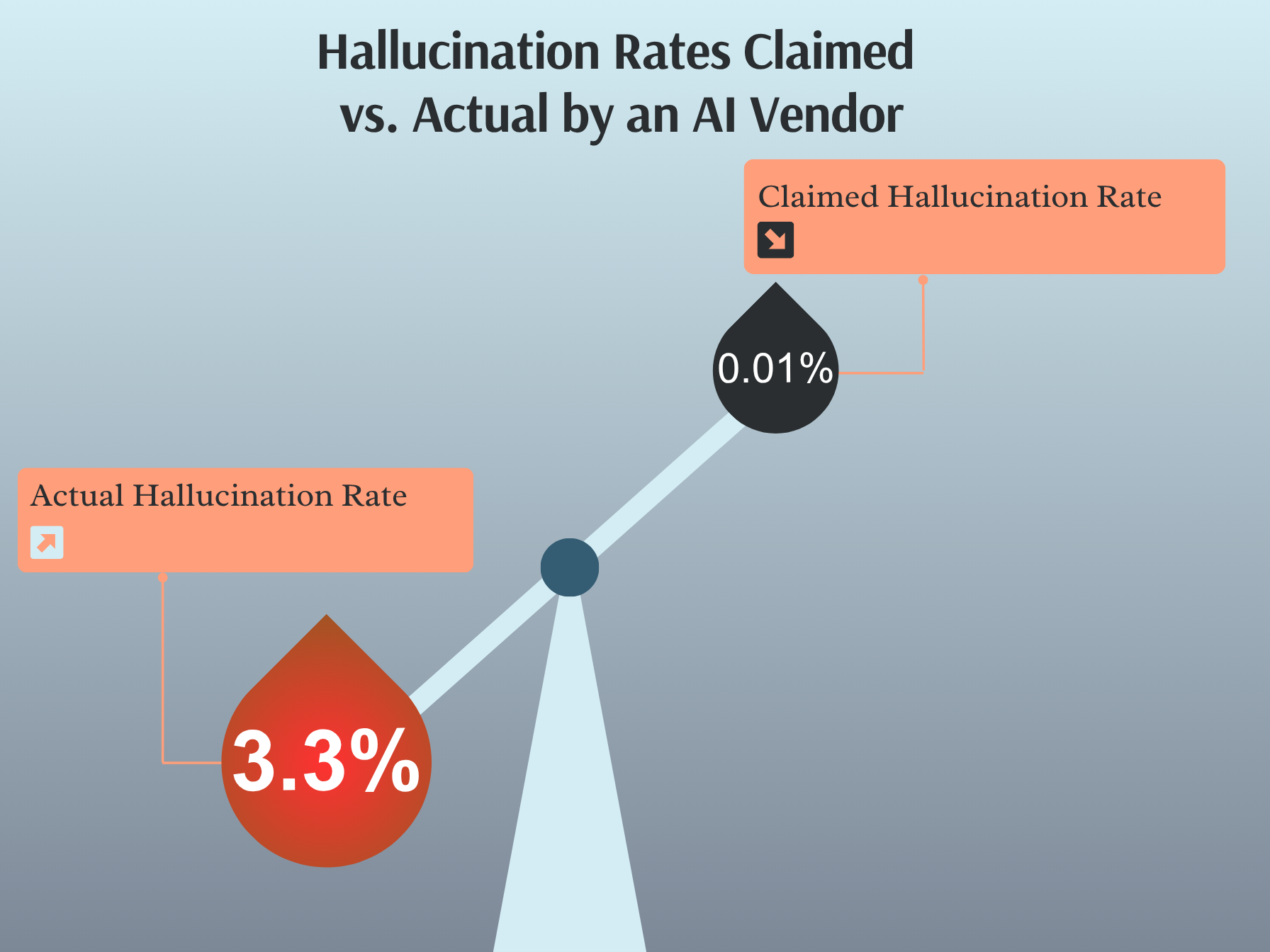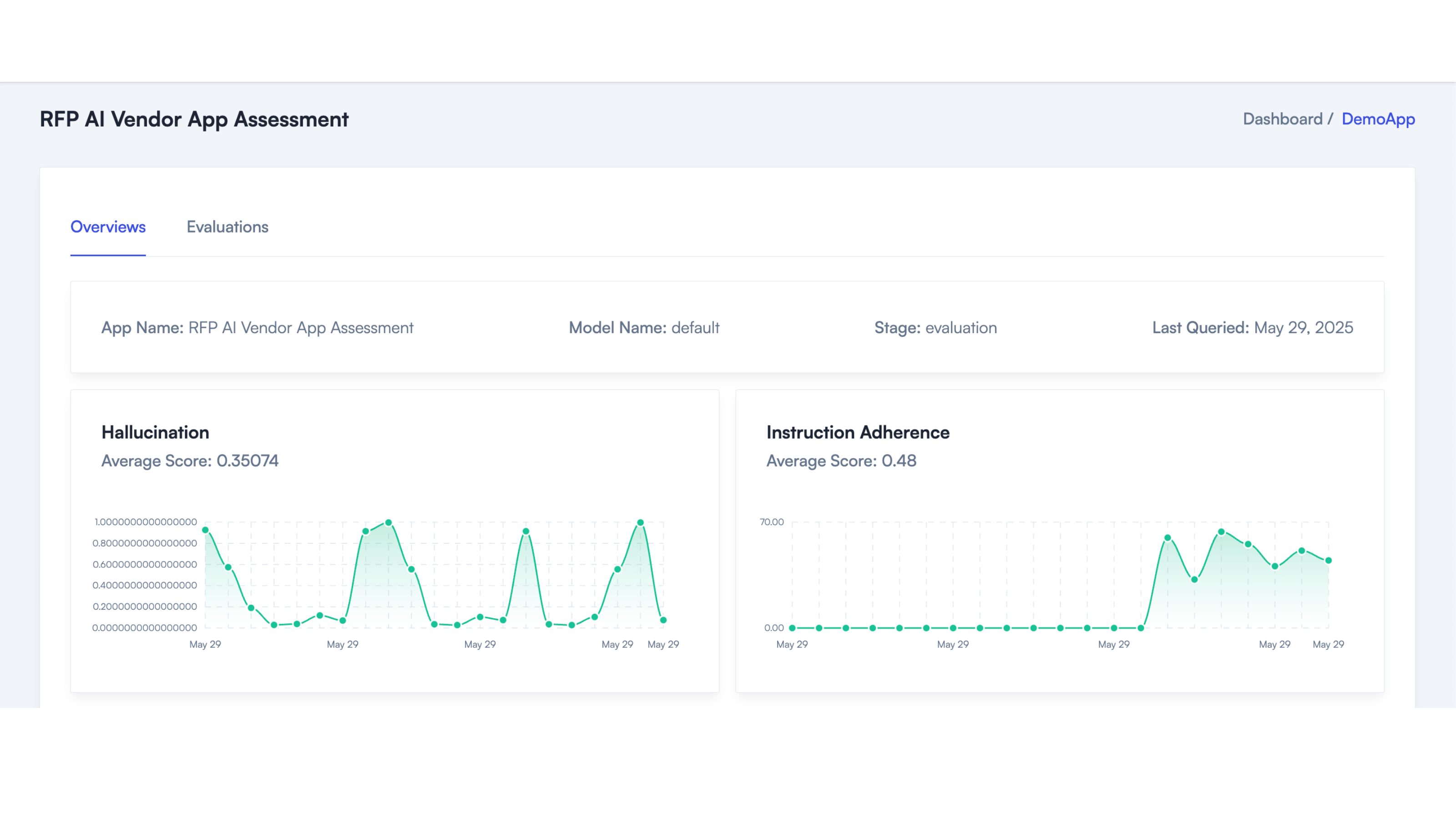Managing and mitigating risks associated with third-party AI vendors and services

We are seeing a growing and urgent threat: the proliferation of unvetted, misrepresented, or opaque third-party AI vendors. In the race to operationalize AI and maintain a competitive edge, many organizations are turning to external providers—often without the necessary controls or transparency. This creates significant risks that must be addressed with both urgency and rigor.
For example, for a Fortune 50 company, we helped uncover a 3.3% inaccuracy rate in a prominent vendor where the claimed inaccuracy rate was 0.01%. This led the vendor to use our feedback and further improve their model.

Many external AI vendors today promise innovation but deliver opacity. Some overstate the sophistication of their solutions, misrepresent performance, or even substitute human labor for automation without disclosure. Others lack the robust governance and security measures required to meet enterprise standards.
This lack of transparency and accountability introduces an array of risks for your organization. Without a clear window into how third-party AI systems operate, you expose your business to compliance failures, security vulnerabilities, and ethical lapses that are difficult to detect until it is too late.
Organizations must understand that adopting AI solutions from vendors is not simply a procurement decision—it is an extension of your own risk surface.
Failure to manage third-party AI risks can have serious and lasting consequences.
Every third-party integration is a trust decision. Without robust evaluation and monitoring, you are entrusting your reputation and compliance posture to unknown actors.
Enterprises must move beyond surface-level vendor assessments. Effective third-party risk management in AI demands:
Responsible organizations demand transparency, evidence, and accountability from every AI vendor. Anything less is an unacceptable risk.
AIMon empowers organizations to take control of third-party AI risk with actionable, integrated solutions.

Independent Output Assessment With AIMon, you can directly assess the quality, compliance, and safety of outputs generated by any third-party AI vendor. This ensures you are not accepting vendor claims at face value, but holding them to measurable standards.
Integrated Policy Enforcement AIMon enables direct integration with third-party applications, so your organizational policies—covering compliance, ethics, privacy, and security—are enforced automatically and continuously, not just at procurement but throughout the AI lifecycle.
Continuous Monitoring and Enablement AIMon provides the infrastructure to continuously monitor vendor performance, detect deviations, and trigger remediation if risks are detected. Where needed, AIMon Enablement helps your teams integrate these controls efficiently, aligning your vendor relationships with your governance and compliance goals.
By putting AIMon at the center of your third-party AI risk management strategy, you achieve:
Enterprise AI success depends on the strength of your partnerships—and the rigor with which you oversee them. With AIMon, you gain the assurance and agility to innovate safely, building a future where every AI vendor is held to the highest standards.
If you are ready to set a new standard in AI vendor risk management, AIMon is here to help you lead with confidence.
Backed by Bessemer Venture Partners, Tidal Ventures, and other notable angel investors, AIMon is the one platform enterprises need to drive success with AI. We help you build, deploy, and use AI applications with trust and confidence, serving customers including Fortune 200 companies.
Our benchmark-leading ML models support over 20 metrics out of the box and let you build custom metrics using plain English guidelines. With coverage spanning output quality, adversarial robustness, safety, data quality, and business-specific custom metrics, you can apply any metric as a low-latency guardrail, for continuous monitoring, or in offline evaluations.
Finally, we offer tools to help you iteratively improve your AI, including capabilities for real-world evaluation and benchmarking dataset creation, fine-tuning, and reranking.